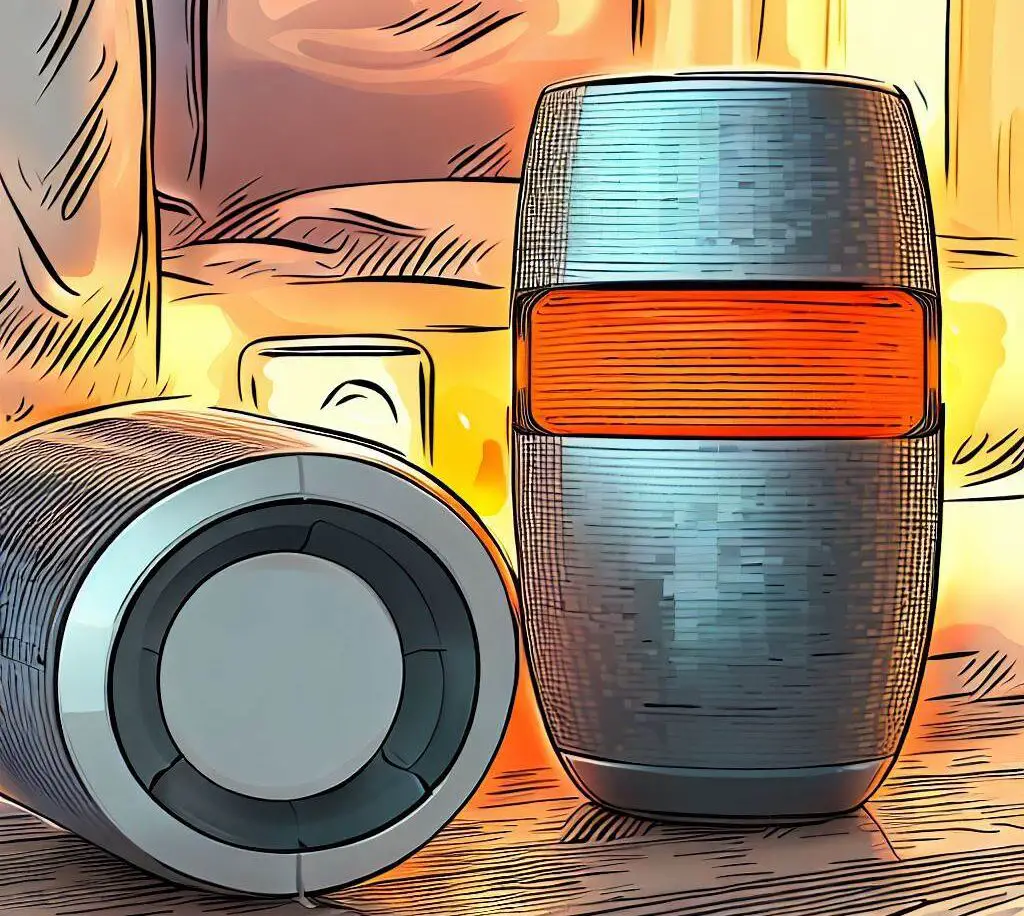It feels common nowadays for someone with a limited budget to start looking for their own personal piece of tech only to be met with high triple-digit price tags.
It doesn’t matter how brilliant the sound quality of a speaker is, nor how loud it gets if it stands a few hundred dollars above your comfort zone.
JBL and Ultimate Ears have recognized this issue and responded with two incredibly competitive speakers — the JBL Flip 6 and UE Boom 3.
For those looking for the ideal speakers that sit well under 200 dollars, you have come to the correct webpage. We will be giving these two budget-friendly products a comprehensive comparison that goes over every aspect of their design, sound, battery, and features in as much detail as can be found on either device.
By the end of this article, you will have every nugget of knowledge you need to make an informed purchase one way or the other.
~~~ Check Price: JBL Flip 6 ~~~
~~~ Check Price: UE Boom 3 ~~~
Quick Comparison
The Flip 6 is competitive with the Boom 3 throughout, though it finds itself wanting for longer battery life and more well-represented audio. With an MSRP hovering around 130 USD, this product offers quite a bit of quality.
Unfortunately, it fails to really outdo the Ultimate Ears product in any measurable way. Conversely, It is a beautiful product that is well-made and durable in most environments.
At the risk of comparison spoilers, the Boom 3 is the superior product to the Flip 6. It costs a bit more (closer to 150 USD retail), but it has a good battery (especially considering its size and weight), competent sound quality, exceptional design, and unflinching durability.
If you want a portable speaker for a price that feels agreeable, I struggle to think of a more appropriate product than the Boom 3.
Sound Quality
We are going to start with the most important category for any speaker system – its ability to produce loud, crisp audio.
What we are looking for in this category is how loud the volume can get and how clear it sounds at its highest decibel, how crisp and clear the audio quality is, how large the area of sound feels, and its frequency response. So even if a speaker produces an incredibly high volume, if the music is chunky, unclear, and one-dimensional it still lacks several qualities a good speaker needs.
Both products offer a graphic equalizer to allow consumer customization.
The JBL Flip 6 is not a bad speaker for its price, though it does have very stiff competition in the UE Boom 3. This product has a competent frequency response and offers a pretty impartial sound, though as is often the case with smaller speakers it lacks the deep bass that some find crucial.
For its size and price tag, it offers some fairly wide-reaching sound that doesn’t feel one-directional. The volume is going to be its biggest drawback, as this will not work as a “party” speaker.
The JBL speaker has a 1.75 x 3-inch woofer and a .6-inch tweeter and a specified frequency response of 63Hz – 20kHz.
Moving to the UE Boom 3 we have a speaker that offers a surprising amount of quality for such a bargain price. Its biggest strength without question is its unbelievable soundstage that not only plays in stereo but feels like it touches every corner of the space it encompasses.
It uses its bass quite liberally despite not being able to touch the lower end, and the treble at times can feel a bit held back. Similar to the Flip 6 it doesn’t have a great amount of volume, though it comes in silky smooth with very little static at its peak decibel.
Looking into the inside this product has two 2-inch drivers and two 2 x 4-inch passive radiators. Its listed frequency response is 90Hz – 20kHz.
Verdict – The UE Boom 3 is the superior product in audio quality even if it offers a more limited frequency response.
Design & Durability
Both products feel very similar in design and it makes it very difficult to determine which is superior to the other. The Flip 6 and Boom 3 are both exceptionally durable to the elements and will not fall short of your expectations should you choose to take them outside. To offer more insight let’s take a closer look at each individual product.
The Flip 6 like most JBL products is exceptionally well-designed with a focus on durability and easy transportation. It offers an IP rating of 67 and has a tough fabric that surrounds the large middle section, with rubberized ends around the perimeter of the dual passive radiators that offer an exciting visual bounce to your audio experience. It comes with a hook as well to attach to a part of your outfit or an accompanying strap.
The Boom 3 as usual is sitting directly on the heels of the Flip 6 and matches its IP rating, along with the durable fabric that can be found on the Flip 6. It comes with a built-in hook and seamless volume buttons that feel like a natural extension of the device itself. Design-wise both of these products are attractive and it comes down to personal preference as to which a consumer would prefer.
Verdict – These products are both exceptional and personally I can’t find something to edge one over the other. They are robust, visually appealing, and barely over a pound.
Battery
Unlike most speakers, portable alternatives require a lot in the way of juice. Not only does the owner of a portable speaker have to consider how long a charge will last, but how long it will last at higher volumes (where all batteries go to die).
This category is judged on charge longevity, how quickly a battery takes to charge, and power-saving features.
The Flip 6 has a satisfactory battery life though the listed number of twelve hours feels inaccurate upon secondary testing. What’s more likely is something closer to about six, though thankfully it allows you to listen to music while it charges so as long as you are close to an outlet you should be alright.
Charge time takes somewhere between 2 – 2.5 hours and it comes with a handy power-conserving function that shuts off the device after twenty minutes of inaction.
The Boom 3 starts to really gain some traction in the battery department with a listed battery life of fifteen hours. This is pretty accurate though separate testing reveals closer to around 14 hours, which is still very good for a one-pound device. Charging the device up will be a few minutes past two and a half hours and like the Flip 6, it comes with a power-saving feature that cuts off at fifteen minutes.
Verdict – The Boom 3 has a superior battery by a wide margin.
Features
Who doesn’t love bells and whistles? Features provide additional possibilities to a device that already comfortably covers all its required bases.
Dozens of additional features won’t save a device with poor audio and abysmal battery life – but they will absolutely elevate a product that already proficiently covers these other more important areas.
To give you a better idea of what both products have, let’s go down the list of their various attributes.
The Flip 6 has a small, focused list of features, none more loudly marketed than its PartyBoost feature that allows multiple speakers to link up and play in unison.
It comes with BlueTooth 5.1 compatibility and has several in-app options. These include a customizable graphic equalizer and remote controls including power. While this list isn’t comprehensive, JBL has done a good job of giving the more important features without throwing in needless gimmicks.
Lastly, the Ultimate Ears Boom 3 is similar in its focus on practicality. It offers Bluetooth Compatibility (though doesn’t state which version), can float, has one-touch playlist options with the “magic” button, multispeaker compatibility, and more features found in the app.
With the accompanying app, you get a graphic equalizer with presets, remote controls including power, a musical alarm, and can set your playlists to work with the magic button.
Verdict – While the Boom 3 has a wider set of features, the lack of Bluetooth transparency makes it hard to give it the edge.
Conclusion
While both products are above and beyond the call of duty for their price range, the Boom 3 is the superior product in both sound quality and battery life.
While its retail price is about twenty dollars higher, this is a fee worth dealing with for a product that has all JBL has and more.
For those JBL loyalists, you will still get a good speaker in the Flip 6, even if it falls short in battery life and has a restrained volume.
~~~ Check Price: JBL Flip 6 ~~~
~~~ Check Price: UE Boom 3 ~~~
FAQs
Is the battery life affected by the volume level on both the JBL Flip 6 and UE Boom 3?
Yes, the battery life on both speakers decreases with higher volumes. This is typical for most portable speakers as louder volumes require more power.
Can the JBL Flip 6 and UE Boom 3 connect to multiple devices at once?
Yes, both speakers can connect to multiple devices at once. This is great for switching between different music sources or sharing DJ duties at a party.
Do the JBL Flip 6 and UE Boom 3 support voice assistants like Siri or Google Assistant?
As of their current versions, neither the JBL Flip 6 nor the UE Boom 3 support built-in voice assistants. However, if your device has a voice assistant, you can still use it to control the speakers indirectly.
Are the JBL Flip 6 and UE Boom 3 compatible with all Bluetooth-enabled devices?
Yes, both the JBL Flip 6 and UE Boom 3 should be compatible with any device that has Bluetooth connectivity. This includes smartphones, tablets, laptops, and even some TVs.
Can the JBL Flip 6 or UE Boom 3 be used as a speakerphone for calls?
Unfortunately, neither the JBL Flip 6 nor the UE Boom 3 supports the speakerphone function. They are focused on providing high-quality audio playback.



